Thailand is not just a great country to visit or teach English in, it’s also the perfect base to explore South-East Asia from. In fact, it’s one of the biggest draw-cards for the teachers we place that Thailand has some seriously affordable (and beautiful) neighbours. Let’s explore what each country has to offer and what to expect to pay to get there.
Interested in Teaching English in Thailand? We’ll send you more info!
Or learn more about our Teach English in Thailand program
1: Cambodia
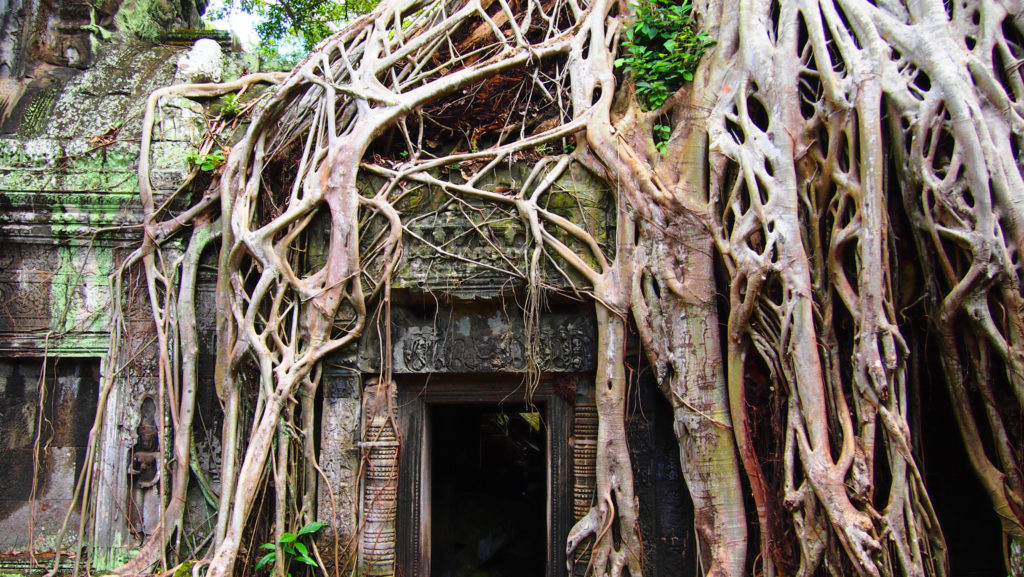
The overgrown ruins of Tha Phrom at Angkor Wat. Image Credit
Why it’s a great choice
It’s got incredible history and culture. The world-famous ruins of Angkor Wat are on many a bucket list. If flocks of tourists put you off visiting, we recommend checking out Angkor Thom next door – much quieter, much fewer selfie-sticks.
The capital of Phnom Penh is an important historical pilgrimage if you’re wanting to learn about the country’s tragic recent history during the murderous reign of Pol Pot and his Khmer Rouge in the 1970s. It’s also quickly becoming one of the hippest cities in the region with a budding bar and restaurant culture, especially around Bassac Lane.
Finally it’s got a very underrated island scene in the South. Head to Sihanoukville and nearby Koh Rong for a rustic, hammock, palm tree and hut-on-the-beach scene. There are no ATMs on the islands, so bring cash!
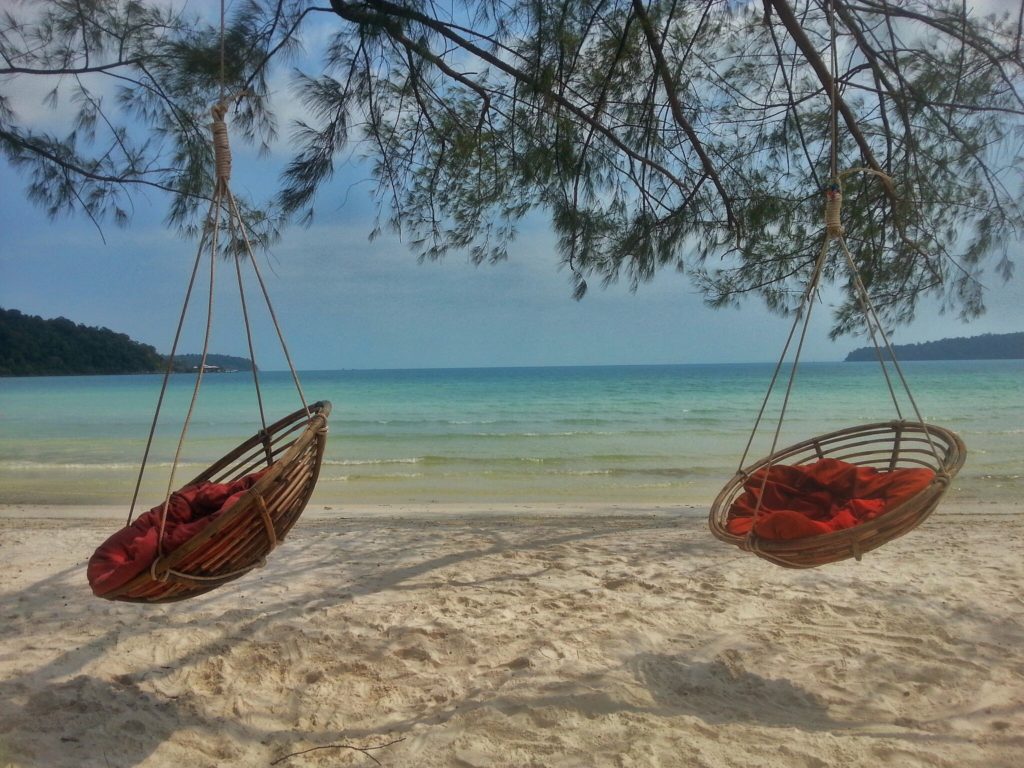
Koh Rong is ideal for travellers who want a rustic spot away from the crowds. Image Credit
Getting there
Flights
- From Bangkok to Phnom Penh or Siem Reap (for Angkor Wat) round trip, from around 3500THB (around $100)
Bus/Minibus
- From Bangkok to Siem Reap: 8-11 hours, $23-$28 each way
- From Bangkok to Phnom Penh: 6 hours, $13-$15 each way
- From Phnom Penh to Sihanoukville: 3-6 hours, $7-$12 each way
Boat
- From Sihanoukville to Koh Rong: 45 mins-3 hours, $10-$40 round trip, depending on the quality ferry you take
Visas
Everyone requires a visa, it costs $30 cash, you can get it on arrival at the border/airport or you can apply online before departure for $37, that it takes around 3 working days.
2: Vietnam
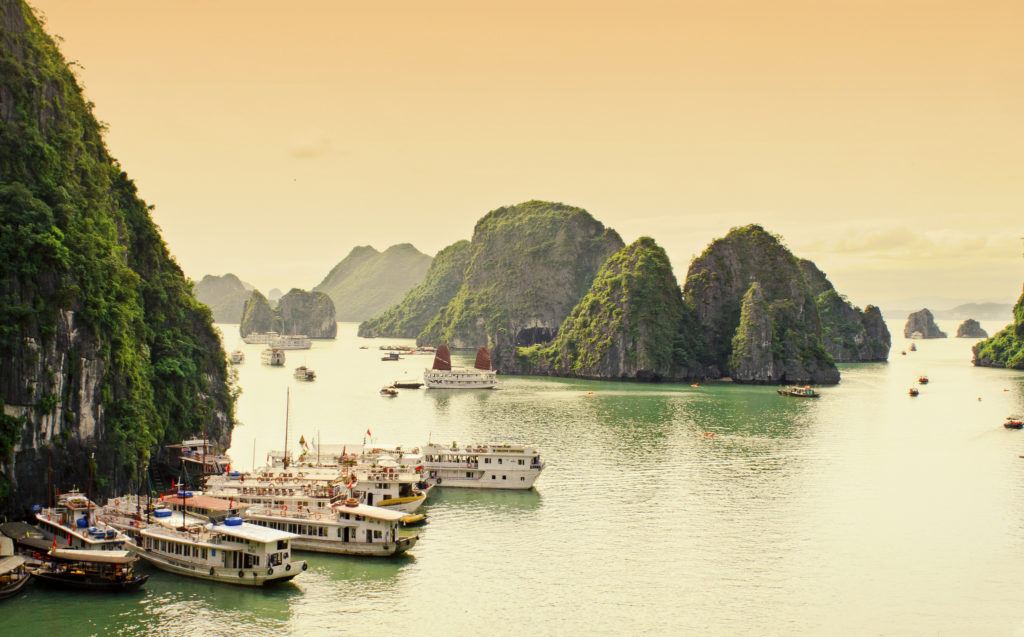
Ha Long Bay is probably Vietnam’s most popular tourist attraction. Image Credit
Why it’s a great choice
Food, scenery, culture and value-for-money. Vietnam has it all and more. It’s a long sliver of a country, so you’ll probably be doing it North to South or vice versa and travelling by train between the cities along the way. If you’re starting in the North, head to Hanoi, Vietnam’s frenetic capital. It’s a great base to reach and explore neighbouring world-famous Ha Long Bay and its many cliffs, islands and caves.
You can also catch a train to Sa Pa near the Chinese border for lush and epic scenery amongst the hills and rice paddies; it’s also a great place to meet the many fascinating ethnic minorities in the area.
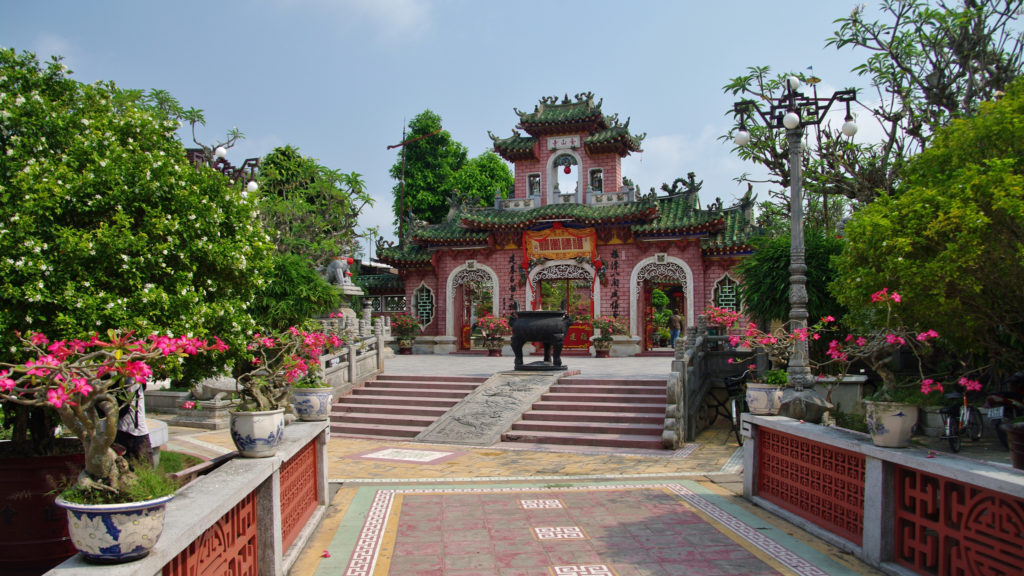
Hoi An (pictured) and Hue are Vietnam’s two most historic cities. Image Credit
In the country’s centre is its ancient capital Hue, and historical port city Hoi An, really worth it for the history and culture vultures, these will yield many an enviable Instagram-worth opportunity too. Sandwiched between these two and bringing the perfect balance to your civilised sightseeing is the country’s 3rd largest city, Da Nang, packed full of beach bars and resorts.
Way down South is Vietnam’s number 2 metro, officially Ho Chi Minh City, almost everyone still calls it Saigon. It has an epic skyline which will remind you of the likes of Shanghai but down on the ground it has a very much more traditional feel with loads of French-colonial and pre-colonial architecture.
It also has a thriving cafe and bar culture making it great for a few nights out. From here you can explore the famous tight squeezes of Cu Chi tunnels used by the Vietcong to outsmart the American troops during the war or head out to the Mekong Delta to see how the locals live at the mouth of one of Asia’s most important rivers.
Oh and did you know that if you have a year to spare and a degree, you could teach English in Vietnam too?
Getting there
Flights
- From Bangkok to Hanoi, 3500 THB round trip (around $100)
- From Bangkok to Saigon, 2500 THB round trip (around $72)
Train within Vietnam
- From Hanoi to Da Nang/vice versa, from $35, takes about 16-17 hours, can be done overnight
- From Da Nang to Saigon/vice versa, from $43, takes about 18 hours, can be done overnight
Visas
- UK citizens don’t need a visa for a stay of up to 15 days for tourism purposes only
- Pretty much the rest of the world needs a visa which can be applied for prior to arrival at a Vietnamese Embassy/Consulate or online through a Vietnam-based travel agency. The official word is that a visa needs to be applied for through a consulate, however there are numerous online services offering “100% guaranteed” online visas – while not official many travellers do utilise these services successfully
3: Laos
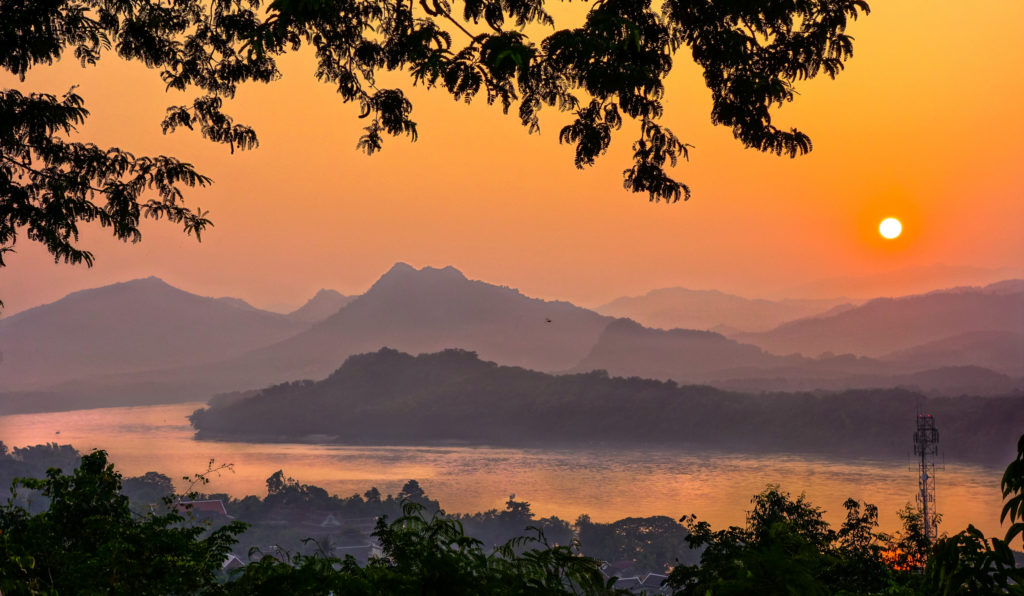
Sunset over the Mekong in Luang Prabang, it’s hard to find a more serene scene.Image Credit
Why it’s a great choice
Probably the most underrated of Thailand’s neighbours, Laos is a little known country to most Westerners. It flies under the radar largely due to the fact that it’s the only country in the region without a coastline, and that it is mainly a rural, agrarian society shunning most flashy ‘first world’ trappings.
Despite it’s size, it is very sparsely populated with the whole country having just 3 quarters the population of Bangkok. What I’m getting at is: it’s old-fashioned, quiet Asia, the kind that’s hard to find nowadays.
Vientiane right on the Thai border is the country’s capital, but it can probably best be described as a kind of overgrown village, though a village with a wonderful array of temples and a peaceful riverfront for enjoying an ice-cold beer.
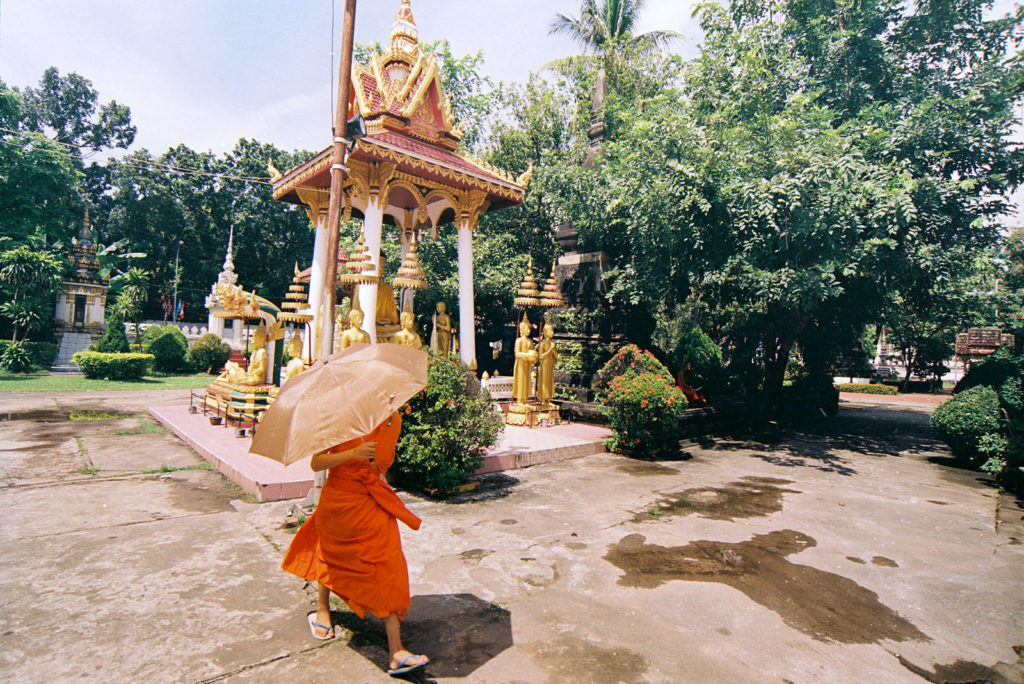
Monks have traditionally outnumbered tourists in this little known country. Image Credit
Speaking of rivers, the country is dominated by the mighty Mekong which runs the length of the land from the Chinese border in the North to the one with Cambodia in the South. On its banks, aside from Vientiane, you’ll find one of the most popular cities to visit in the country, Luang Prabang with its colonial and traditional architecture and stunning temples. It’s quiet, clean and serene, very different to the cities found in its neighbours.
To the east is the famous plain of Jars, a vast area scattered with enormous stone jars believed to be around 2000 years old, though little is known of the people who created them.
Getting there
Flights
- From Bangkok to Vientiane, from around 1900 THB ($55) round trip
- From Bangkok to Luang Prabang, from around 3500 THB ($100) round trip,
Train
- While you can’t get all the way into Vientiane by train, you can get close enough to catch a shuttle. Trains from Bangkok to Nongkhai on the border with Laos takes just short of 10 hours (some overnight) and costs from $9 to $37 each way depending on class of travel. Then you can take a shuttle train over the border for between $8 and $15 each way. The border is about 13km from Vientiane, so from there you can either catch a tuk tuk or any one of many different transfer options.
River
- This option is for if you cross the border from Northern Thailand at Huay Xai in Laos. From here you can catch a boat to Luang Prabang (none to Vientiane) which takes up to 2 days. Speedboat is the least safe, least dry way of doing it but it’s the fastest at 6 hours and costs about $35. Slow boats take 2 days and cost $28 for the basic boat and luxury 2 day cruises between about $80 and $375.
Visas
Laos requires almost all travellers to have a visa for entry which is available on arrival, this includes the United States, UK, Canada, South Africa, Australia & New Zealand. This applies to air entries and entries across the land border at Nongkai. Other land border crossings may require a visa applied for in advance from a Laotian Embassy/Consulate.
4. Myanmar
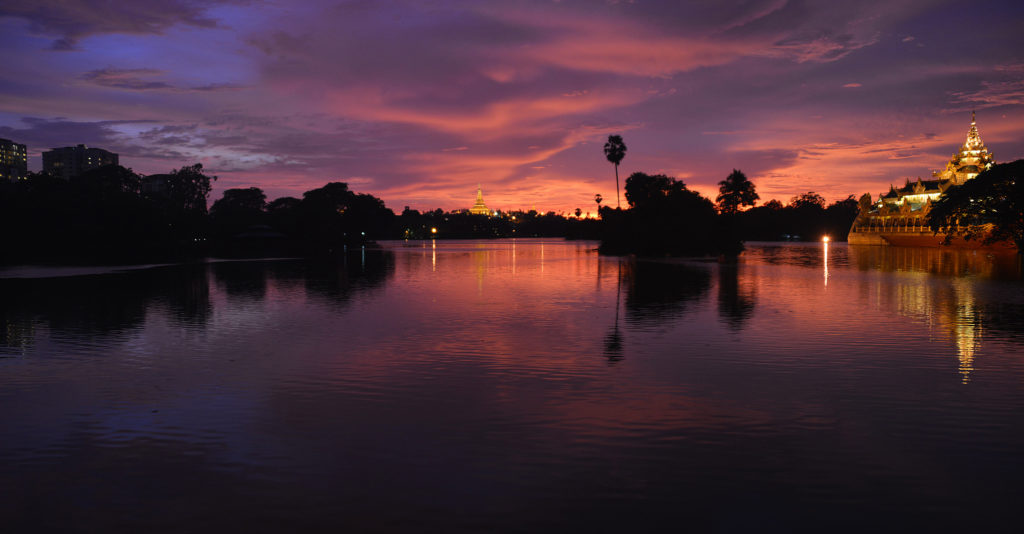
Yangon is probably most picturesque around Kandawgyi Lake. Image Credit
Why it’s a great choice
Myanmar, formerly Burma, was once known as a hermit country, cutting itself off from the world, with its strict military government it saw little in the form of tourism. Things have changed recently, a lot, opening up a treasure trove of places to explore. It has much of Laos’ rustic charm along with Cambodia and Thailand’s architectural and historical heritage and counts influences from Tibet, China, India, Thailand and Britain in its culture.
Unlike the rest of the region, Myanmar’s capital Naypyidaw is a tiny, new capital and not really where you’ll be aiming to visit. The former capital and largest city may be your first point of entry: Yangon. The Shwedagon Pagoda is the main draw-card for the city, an enormous complex centred around a giant golden stupa and well worth the visit; avoid midday as it can be incredibly hot to walk around. Check out the city’s fascinating, though crumbling, colonial-era architecture which provides plenty of arty photo ops.
There are also tons of parks and lakes in the city, arguably the most photogenic will be Kandawgyi Lake home to the famous Karaweik, a gleaming golden (there’s a lot of gold in this country) replica of the former royal barge. Near Yangon you can visit the shrine of Kyaiktiyo, a large golden boulder atop a hill near Kin Pun. The nearby city of Bago is also great for Buddhist sights.
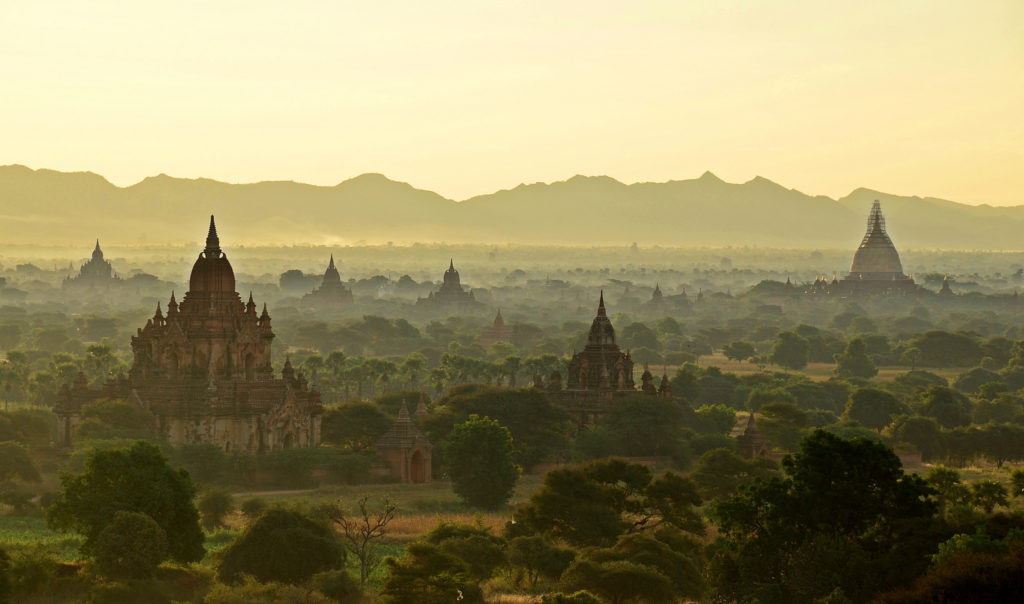
The famous skyline of ancient Bagan, the major drawcard for travellers to Myanmar. Image Credit
Central Myanmar is where things get really awesome though in the form of Bagan, an ancient city stretching 42km2 which once housed over 13,000 temples, 2,200 of which still remain today. It’s a photographer’s dream and one of the main reasons for visiting the country. Mandalay, also in the central region was the 19th century capital of Burma and is home to the spectacular royal palace, monasteries and temples.
There’s a ton to see in Myanmar from mountain scenery to remote island beaches and fascinating culture and history, it’s hard to explain in just a paragraph why you should go, but let’s just say that you simply must! Importantly this is pretty much a cash-only country and having large denomination, clean, pristine US Dollar bills is essential when doing exchanges, you can also draw cash at the airport and in Yangon from ATMs.
Getting there
By Plane
- Bangkok to Yangon costs from around 2000 THB (around $60) for a round trip
By Land
- There are 4 land border crossings at Tachileik/Mae Sai, Myawaddy/Mae Sot, Ban Phunamron/Htee Kee and Kawthoung/Ranong, though getting in by air is going to be simplest and quickest and may save you some $$$ too.
Visas
If you’re reading this in English, you probably need a visa to go to Myanmar. This is not available on arrival and must be applied for in advance. Luckily it can be done online (only valid for air entries) and costs about $50. For those doing land-crossings, you may need to enlist the help of a Thai travel agency to apply for the visa.
5. Malaysia
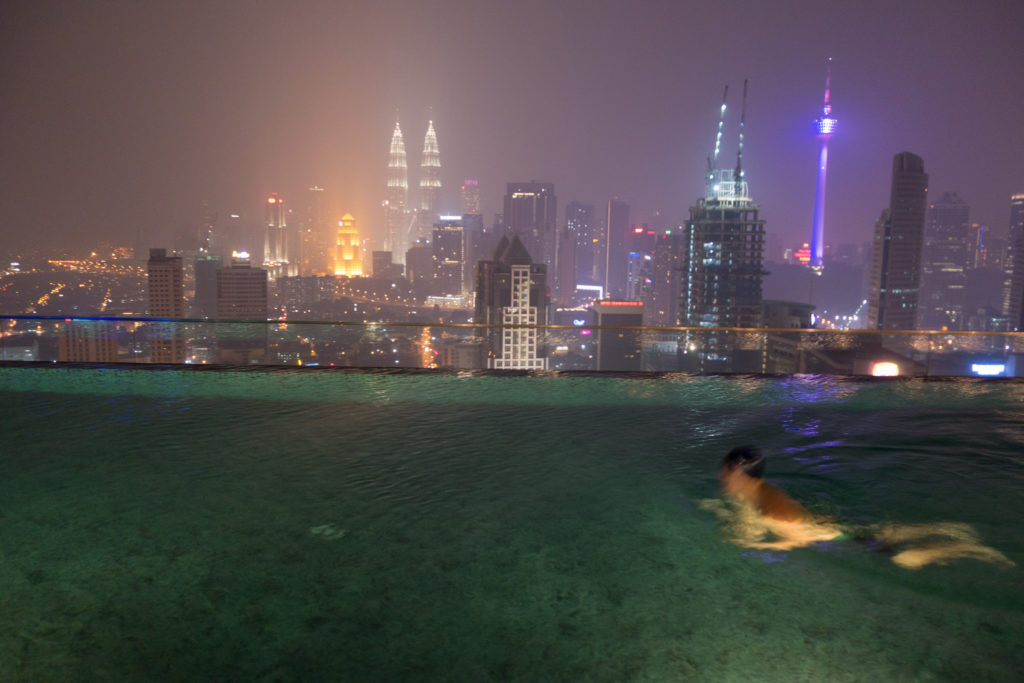
Kuala Lumpur is a modern metropolis with many clubs, rooftop pools and bar. Image Credit
Why it’s a great choice
The only Muslim-majority country in our list, Malaysia is Thailand’s Southern neighbour and in stark contrast to the rest of South-East Asia. Where the rest of the region can often be chaotic or more rural in nature, Malaysia is regularly neat, clean, modern and almost Western across large parts of the country.
Don’t get me wrong, it’s most certainly no Dubai or Switzerland and still holds a great deal of the things we all love about this part of the world like friendly people, tropical scenery and great food, but it is decidedly different. For example, one can easily rent a car and drive it around the mainland as you would back home (especially for the Brits, Saffas, Aussies and Kiwis where they drive on the same side of the road, like Thailand), the roads are more sedate and traffic obeys rules unlike across the border.
The west coast, in particular the islands of Penang and Langkawi, feels a lot like Thailand, if you look past the skyscraping apartment blocks, particularly in Penang. The central highlands are a picturesque, mist-shrouded tea country which is very popular with the locals where much of the buildings hark back to the British colonial era.
Kuala Lumpur, the capital is reminiscent of Singapore and has all the modern trappings to match: big malls, skyscrapers, clean streets, a metro and so on. The ‘golden triangle’ in downtown KL is where most of the shopping and nightlife is at.
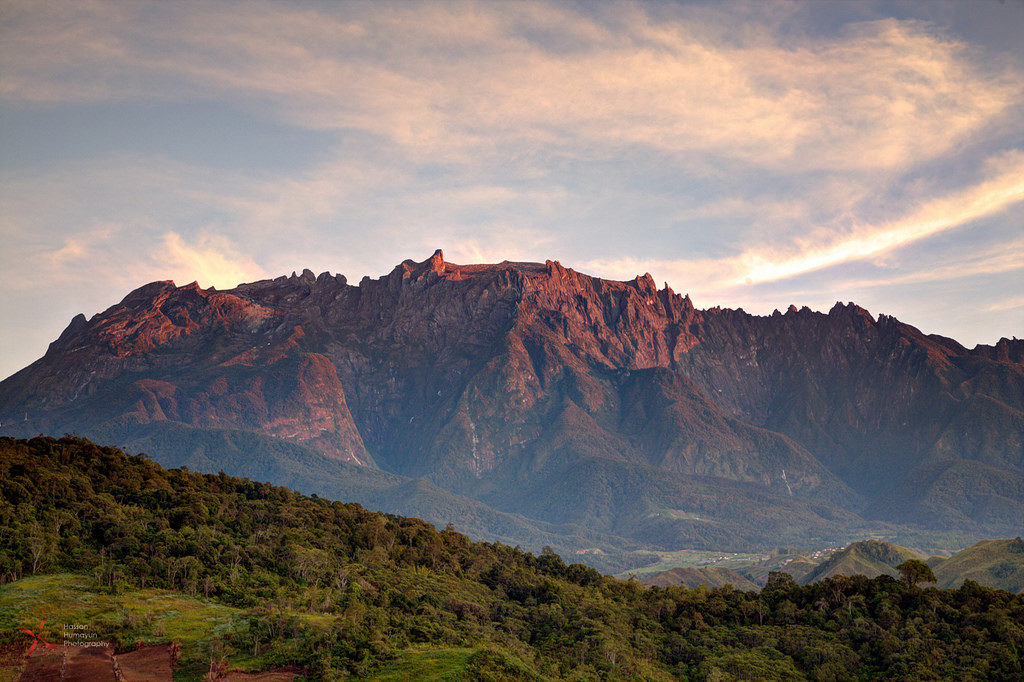
Mount Kinabalu on Borneo is a popular peak to scale, despite its intimidating shape, it doesn’t require special climbing equipment. Image Credit
What’s often forgotten is that most of Malaysia’s land is in fact not on the mainland but on the island of Borneo which is shares with the tiny kingdom of Brunei and Indonesia. Packed full of virgin rainforest, it has an odd history as being the home of terrifying head-hunters and a dynasty of white Rajas known as the Brookes.
The Western portion, Sarawak, is great if you’re after seeing orangutans and proboscis monkeys and experiencing what tribal rainforest life is like. To the east lies Sabah, an awesome option for the more adventurous among you. Here you can hike the massive Mount Kinabalu, which despite being over 4000m high is ascendable without specialised equipment.
It also has incredible diving spots off the coast near Tawau and Semporma like Pom Pom and Sipadan Islands where you can often see turtles in amongst the stunning coral reefs.
Getting here
By Plane
- From Bangkok to Kuala Lumpur, for mainland Malaysia from around 3500 THB (around $100) round trip
- From Bangkok to Kuching, for Sarawak, from around 5500 THB (around $160) round trip
- From Bangkok to Kota Kinabalu, for Sabah, from around 6800 THB (around $195) round trip
- From Chiang Mai (north Thailand) to Kuala Lumpur, from around 3000 THB (around $90) round trip
- From Surat Thani (south Thailand) to Kuala Lumpur, from around 2700 THB (around $80) round trip
By Land
- Trains used to run from Hat Yai to Kuala Lumpur however these have stopped since May 2016.
- We do not currently recommend crossing the border by land from Thailand due to safety concerns with the far south of Thailand
Visas
If you’re from the UK, Ireland, South Africa, US, Canada, Australia or New Zealand you don’t need a visa for a stay of up to 90 days.
Interested in Teaching English in Thailand? We’ll send you more info!
Or learn more about our Teach English in Thailand program


0 Comments